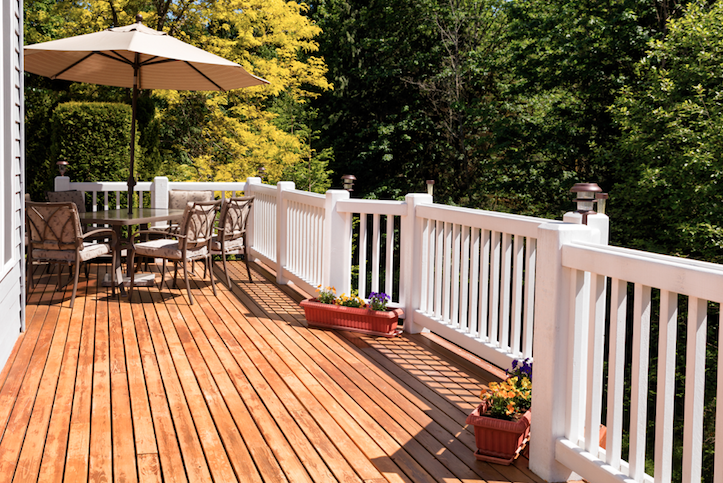Demand for plastic decking is projected to increase at a faster rate than overall demand for decking, according to a new forecast from The Freedonia Group. U.S. demand for decking is forecast to increase 1.3% annually over the next three years, while plastic decking demand is predicted to rise 2.0% annually during the same time period.
Vinyl decking, which accounts for the majority of plastic decking demand, is expected to increase its share of the segment due to rising interest in cellular PVC decking, according to the Cleveland-based research group. Cellular PVC offers the surface texture and hue of wood decking, but is much less impacted by degradation caused by exposure to the elements and mold growth. Standard PVC decking demand is also forecast to increase as homeowners use vinyl materials for railing and other components for which composite lumber is “insufficiently durable,” according to The Freedonia Group.
Wood-plastic composite is gaining popularity among homeowners because of the material’s durability and wood-like appearance. The use of capstock-coated decking is expected to have a positive effect on wood-plastic composite decking demand.
Among other plastic lumber types, polyethylene decking is the largest alternative decking material. Lumber made from non-vinyl plastics often feature high recycled content, which promotes use in public projects. The Freedonia Group forecasts demand for plastic lumber made from non-vinyl materials will increase at a slower rate than for vinyl as cellular PVC products are expected to take market share from these materials.
Gains in overall decking demand will be driven by the need to renovate portions of the largest existing pressure-treated-lumber deck stock, according to The Freedonia Group. Despite projected gains in wood-alternative decking, wood will remain the largest decking material in both lineal feet and value terms. Wood remains popular because of its relatively low cost, aesthetic appeal, and familiarity with homeowners and contractors. Wood decking’s maintenance requirements and worse durability compared with other decking materials supports wood-decking demand in renovation applications, according to The Freedonia Group.
The residential market accounted for 70% of decking demand as recently as 2018 and The Freedonia Group projects the market segment will account for the majority of demand gains through 2023. Growth in residential spending will boost decking demand as a portion of existing decks will require renovation and replacement.
The Freedonia Group’s study, Wood & Competitive Decking, analyzes the U.S. decking industry, provides historical demand, and forecasts for 2023 and 2028 by material, by market, and by region. The full study is available for purchase from The Freedonia Group for $5,700.


